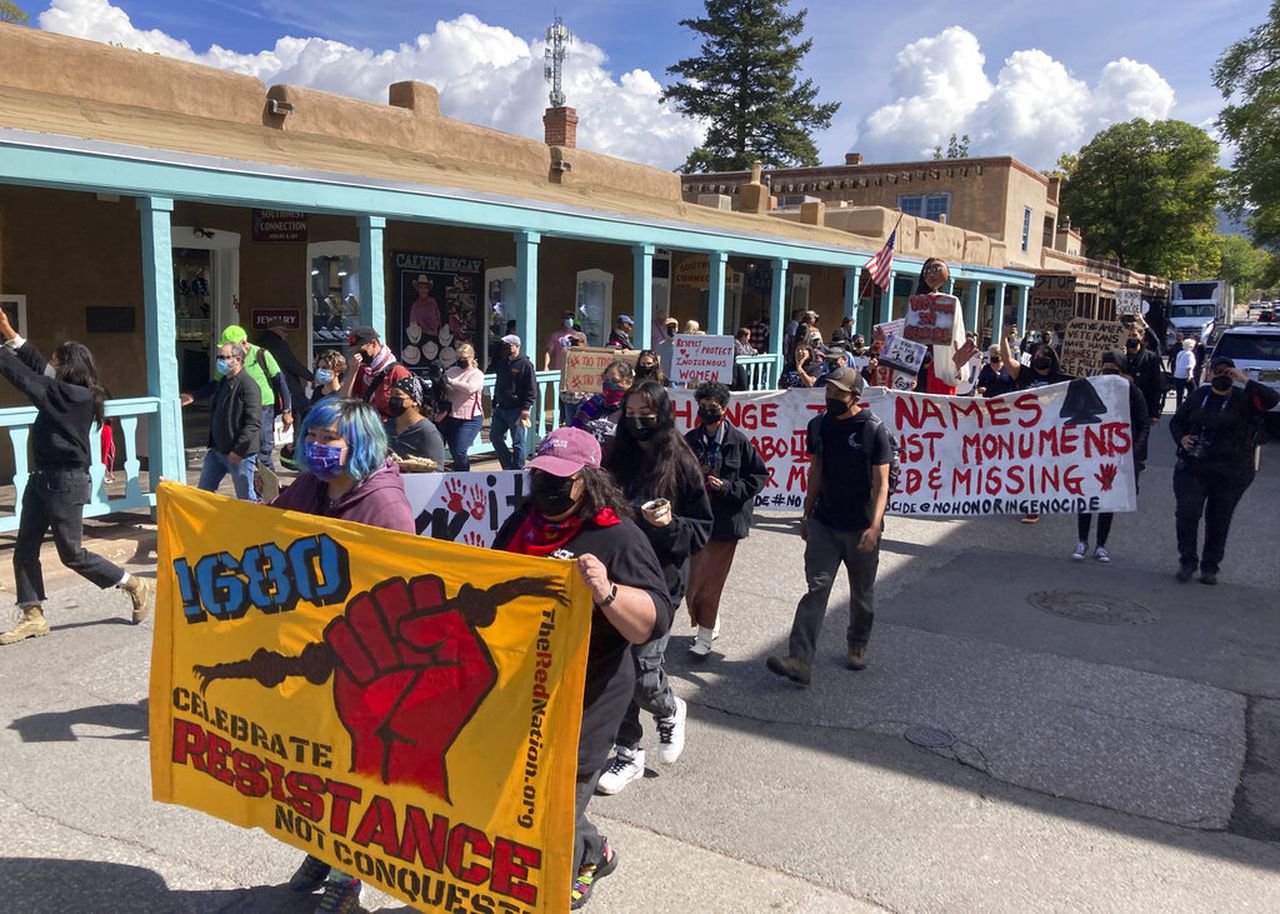New Mexico governor voids territorial orders targeting Native Americans
ALBUQUERQUE, N.M. (AP) — New Mexico’s governor on Monday voided four pre-statehood proclamations that targeted Native Americans during what was a tumultuous time across the western frontier as federal soldiers tried to defeat Navajos, Apaches and others.
Gov. Michelle Lujan Grisham described the 19th century proclamations by former territorial governors as offensive, saying rescinding the proclamations would help to heal old wounds and strengthen bonds with Native American communities.
“The government of New Mexico has not always respected the importance and sovereignty of our Native American citizens, and our history is sadly stained with cruel mistreatment of Native Americans,” Lujan Grisham wrote in an executive order issued on Indigenous Peoples Day.
Lujan Grisham, a Democrat who is running for reelection, pointed to counties within the territory that once offered bounties for scalps of Apache men and women.
Marches, protests and celebrations were held around the U.S. to mark Indigenous Peoples Day. In New Mexico’s capital of Santa Fe, people walked with banners aimed at raising awareness about missing and slain Native Americans. Demonstrators left paint splattered on a monument of Kit Carson, who had a role in the death of hundreds of Native Americans during the colonization of the West.
A celebration in Flagstaff, Arizona, focused on youth who talked about how Indigenous people have contributed to the community. A group of Hopi children performed a Corn Dance in front of City Hall.
In New Mexico, the unwinding of the past proclamations was spurred by Colorado Gov. Jared Polis’ move in 2021 to rescind an 1864 order by one of that state’s territorial governors that eventually led to the Sand Creek Massacre, when U.S. troops killed more than 200 Native Americans in one of Colorado’s darkest and most fraught historic moments.
A search for similar documents led Valerie Rangel, the city of Santa Fe’s appointed historian, to a book of newspaper clippings in the archives of the Huntington Library in California. It represented the most complete collection of New Mexico’s territorial proclamations.
Two of the proclamations voided by Lujan Grisham were issued in 1851 by James S. Calhoun, New Mexico’s first territorial governor. They directed Native Americans to be excluded from official census counts and authorized militias to “pursue and attack any hostile tribe” that was said to be entering settlements for the purpose of plundering.
Proclamations issued nearly two decades later by Governors Robert B. Mitchell and William A. Pile declared certain tribes as outlaws and authorized New Mexico residents to commit violence against them.
“I started looking at the history surrounding the proclamations — was there an impact, did it really fuel hate?” said Rangel, whose roots include Apache and Navajo.
Through her research, she found several bounties for scalping, with some counties going so far as to pay for newspaper advertisements in states beyond New Mexico to solicit people for the efforts. New Mexico became a U.S. state in January 1912.
Rangel shared her findings with tribal and state officials. She’s among those pushing for this part of New Mexico’s history to be included in school curriculums.
“I’d like to see more communication with tribes and have them be the source of the history that’s being learned,” she said.
New Mexico is home to nearly two dozen tribal nations and pueblos, with Native Americans making up more than 12% of the population.
